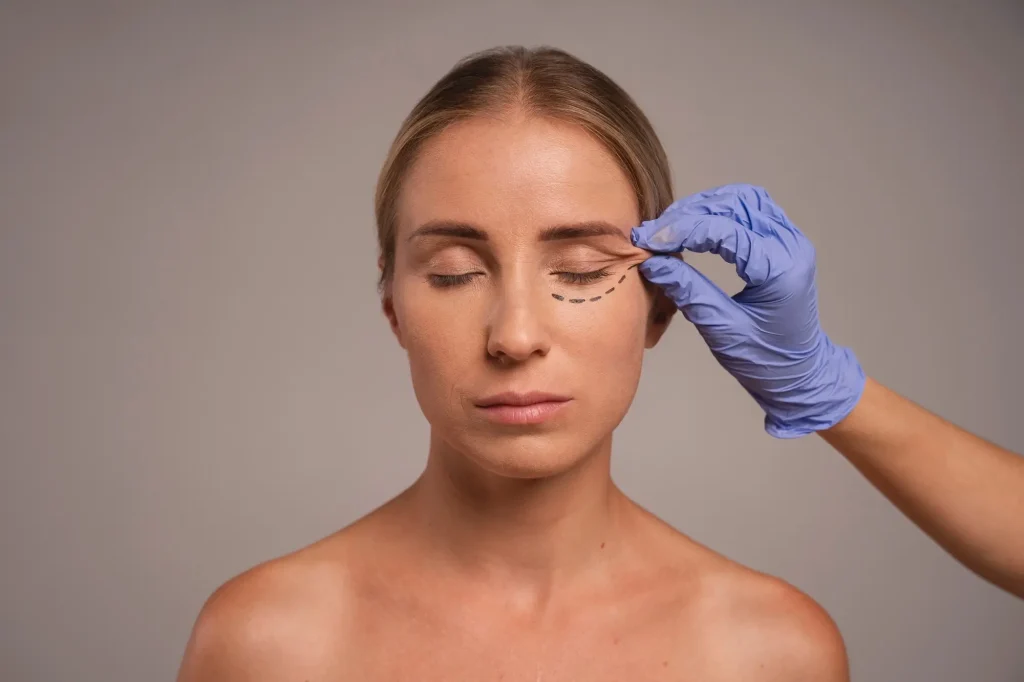Skin peeling is not a foreign or modern invention in the beauty industry. Its history can be traced back to centuries ago, from Ancient Egypt to South Asia’s Ayurvedic traditions. With the ever-increasing demand for procedures that maintain smooth, radiant skin, the industry has developed various modalities for practitioners and patients to choose from. For this article, we will look at the popular peeling ingredients that are responsible for restoring epidermal cells and dermal complexion and the other potential benefits of skin peels.
The rise and misconceptions of skin peels
Skin peels have become a sensation through its constant mentions in pop culture. This hype has created a barrage of stereotypes that have unfortunately created confusion and fear in respect to this treatment. Some media outlets have declared that skin peels are a “brutal way to beautify” and have said that the acidic lotion used for the peeling process is akin to burning the skin away, as it reveals a new layer of fresh skin underneath. This simplistic understanding of skin peels unfortunately could deter potential patients away from the treatment; however, the demand for this treatment is still high and present, so it is evident that many patients do not subscribe to this fallacious way of thinking about skin peels.
Patient management
With so many skin peeling options on the market, the process of choosing one can get be very complicated. There is no one-size-fits-all product, and each patient has their own unique skin condition and tolerance that a practitioner needs to be aware of. As such, the consultation process prior to the treatment is very important when it comes to understanding the patient’s needs, wants, and tolerability in respect to the potential outcome.
A patient may come into the clinic with an unrealistic expectation of treatment, which may be inspired from a face unlike theirs or from unrealistic promotions. However, the patient’s lifestyle is also a factor when it comes to designing the ideal peeling process. This includes the amount of time they have for recovery, as patients may be unable to take off a few days of work for peels with longer downtime.
Another important consideration is also the financial cost of the treatment. Different peels have different range of prices, some of which may outweigh the patient’s budget. It is vital to discuss this issue with patient prior to the treatment, as it can reduce any financial conflict during the process.
Some other important questions that can be included in the consultation are:
- What is the key skin concern of the patient?
- What is the patient’s end expectation of the treatment?
- Which Fitzpatrick skin type are they?
- Do they have a history of using peels? If so, were they happy with the product used?
- Can the patient follow the pre- and post-procedural aftercare steps?
Different types of skin peels
So, what exactly is a skin peeling treatment, and how does it work? Overall, the main purpose of this treatment is to improve the visible and structural component of the skin via the natural exfoliation process. The initiation of the epidermal restoration comes from the deterioration of the epidermis or dermis layer using lysis or keratocoagulation (dermal protein coagulation). The acceleration of the process forces the skin to recreate its own collagen and elastin fibers so as to maintain the new skin layer.
There are three categories of skin peels, and they differ in terms of their degree of skin penetration. They include the following:
- Superficial or epidermal peels: The majority of the peels found in clinics and off-the-counter pharmaceuticals belong to this category. These peels can have alpha-hydroxy acids, or AHAs (up to 50%); beta-hydroxy acids, or BHAs; Retinoids; Jessner Peel; and/or TCA (up to 20%) as their main ingredient(s).
- Medium peel: These peels have been designed to infiltrate into the papillary dermis. Commonly used medium peels are glycolic acid (AHA) (up to 70%) peels, TCA (2040%) peels, TCA with Jessner peels, and GA (70%) peels.
- Deep dermis peels: These types of peels are not as widely-used as the previous two because of its strong effects to the deep reticular dermis. In recent years, the European market has started to embrace deep peels, which has led to increased demand and research. Common deep peels include phenol peels, Baker-Gordon peels, and TCA of more than 40% peels.
Superficial or epidermal peels
Generally, most superficial peels are associated with other topical procedures such as microdermabrasion. Educating patients about the effects of these peels and complying to aftercare steps after the use of an effective topical exfoliant is an important step. While there may be some home-use exfoliants, a proper epidermal peel is best administered in a clinic with the use of a cocktail of topical ingredients.
Hydroxy acids (glycolic acid)
One of the most common topical ingredients used for topical exfoliation and preparation for over 40 years are alpha hydroxy acids (AHAs). It is widely marketed as an organic fruit acid, as it is derived from nuts, fruits, and dairy products. Glycolic acid is the most common AHA derivative, as it is efficient in correcting photoaging conditions and is available in sugar cane form.
AHA functions by impairing the desmosomal junctions in between corneocytes, so as to reduce the corneocyte union. Once the peeling effect has taken place, there is a noticeable 25% increase in the thickness of the dermal layer. This action also brings about an enhanced concentration of glycosaminoglycans, an additional collagen network, and better elastin activity. These hydroxy acids products are unique and cannot be replicated with other mechanical or chemical exfoliators that simply remove the superficial epidermal layer.
As for glycolic acid, the peels are usually processed to achieve a variety of strengths, with 70% the highest concentration. However, the most important factor that determines a successful outcome for glycolic acid peels is the pH of the peel. The correct pH can provide the optimal depth, efficacy, and penetration of the glycolic peel and maintain the efficacy from the buffering during the manufacturing process. Neutralization maintains the safety of glycolic acid peels and is essential for their peeling effect and ability to complete dermal penetration.
Examples of single-ingredient glycolic peels are Skin Tech and Dermaceutic. “High street” brands with higher pH glycolic acid peels include Murad and Neostrata. Neostrata is also the company that is responsible for the discovery of glycolic acid’s desquamating properties.
Lactic acid, another type of AHA, is also used in several chemical peels, such as Glo Skin Beauty, with a concentration of 15%. Sometimes the concertation of lactic acid peels can reach up to 50%. Compared to glycolic acid, lactic acid also boasts natural hydrating properties due to the conversion to the moisturizing lactate. Compared to other AHAs, lactic acid is considerably gentle on the skin.
Retinoic acid (vitamin A)
Retinoic acid is another type of fruit acid that is used in a variety of topical formulations that involve mild solutions to high strength derivatives. The three common forms of retinoic acid are retinol (vitamin A), retinal (retinal aldehyde), and retinoic acid (tretinoin, vitamin A acid, or vitamin A1).
Topical retinoids are usually indicated for acne and photo damaged skin. Once in contact with the dermis, the retinol is converted into the bioactive form of vitamin A, retinoic acid. Its potency as a peel is greater than that of a topical application. For example, an application of a 1% tretinoin peel over six to eight hours on Fitzpatrick Types I to IV skin can achieve exceptional results within two and a half weeks instead of four to six months like with topical applications. Vitamin A peels can be used concurrently with other peel types such as salicylic and glycolic acid peels, so as to enhance their desquamation effects.
Resorcinol
Resorcinol is a phenol by-product that mainly treats pigmentation by breaching the hydrogen bonds found in keratin. It is mostly used in combination with Jessner peels because of its potent side effects, which include thyroid dysfunction, myxedema, and cardiac arrhythmia. Thus, prior to a resorcinol treatment, it is best to perform an allergy test so as to prevent any complications from occurring. It also has a history of peeling use, dating back 150 years.
Jessner solution
A well-known exfoliator, Jessner solution has been in use for more than a century to treat hyperkeratosis lesions or abnormal skin thickening. The original formulation by Dr. Max Jenner contains 14% resorcinol, 14% salicylic acid, and 14% lactic acid. Along the years, the formulation has undergone various modifications, with a typical modern formulation of 17% salicylic acid, 17% lactic acid, and 8% citric acid. Jessner solution is well-suited to be combined with AHA and TCA peels.
Beta hydroxy acids (salicylic acid)
Compared to the water-soluble AHAs, salicylic acid, the most common type of beta hydroxyl acids (BHA), is lipophilic. Thus, those who have oily skin and are prone to have acne are recommended to use this type of peel. The advantage of salicylic acid is its ability to permeate through sebaceous glands and hair follicles as well as inhibit the formation of comedones, blemishes, and/or blocked pores. Generally, the peel forms a thin layer of frost that is not a form of precipitated dermal protein or epidermolysis.
Some professional skincare manufacturers that use salicylic acid in their products are Mene & Moy, ZO, Neostrata, Epionce, CosMedix, and Priori.
Combinations
To enhance the results of their fillers such as Stylage, manufacturers have discovered that it is safe to combine their products in selected protocols. These are also a method to appeal to different patients with unique skin types.
Examples of hydroxy acid combinations include the following:
- ZO 3 Step Stimulation Peel: glycolic, salicylic, and lactic acid;
- Skin Tech Easy Phytic Peels: lactic, phytic, glycolic, and mandelic acid;
- Skin Tech Easy Droxy Versicolor: glycolic, salicylic, citric, lactic, and kojic acid;
- SkinCeuticals protocols: glycolic and salicylic acid and resorcinol;
- NeoStrata: glycolic acid with mandelic acid or citric acid and involves the addition of a daily peel made of glycolic acid and N-acetyl tyrosinamide.
Medium peels
Trichloroacetic acid (TCA) peels, the first medium peels to ever be used, were first used in the 1880s. It made a return to the aesthetic industry in the 1960s as either a single ingredient peel or in mixed formulations. However, the earlier forms were not well-received, as they were problematic and unstable. It could not achieve a consistent result when it was prepared as an aqueous solution due to the non-uniformed concentration. With further developments, more stable supplementary formulas have been developed, and these can be used to achieve optimal outcomes.
Typically, TCA functions by denaturing protein. This causes the coagulation of the proteins of the skin, keratinocyte death, and “frosting.” The skin forms a new layer of epithelium and induces neocollagenesis and replaces abnormal keratinocytes with healthy cells.
TCA comes in various concentrations to address different severity of lines. Low strength TCA peels with a concentration lower than 20% are competent for ameliorating fine lines and wrinkles, but not necessarily for removing deep wrinkles and scars. For TCA peels with a concentration up to 40%, there is a chance of these peels inducing dermal necrosis. For both categories, however, post-inflammatory hyperpigmentation and scarring are common side effects. Those with Fitzpatrick Skin Types IV to VI may require extra care while using TCA peels. Some pharmacists may also supply TCA using a weight in volume (W/V) dilution.
Available TCA single ingredient peels include the following:
- Skin Tech Easy TCA, Skin Tech Only Touch, and Skin Tech Unideep;
- Obagi Blue Peel;
- ZO Controlled Depth Peel.
Products that have TCA in peel combinations include the following:
- Glo Skin Beauty Alpha Beta and Glo Skin Beauty Triplex: TCA, glycolic, and salicylic acid.
- PCA Skin Ultra Peel Forte: TCA, azelaic, lactic, and kojic acid.
Deep Peels
Peels that use phenol have been prescribed for the past 200 years. It wasn’t until 1940s1950s that phenol peels were widely rejected from many medical professionals, who barred it from the field. However, recent work by Vigneron in France, Figureido in Portugal, and Deprez in Spain reintroduced phenol peels in a more acceptable strength.
Phenol acts by dissolving the epidermal layers within the first 36 hours after application. During this process, the basal layer is restructured, and there is a significant reduction of melanin formation. For the papillary dermis, the phenol destroys the elastotic layer to form new collagen in the grenz zone. New elastin fibers are also formed as a network that can help support the new layer.
The recovery time for the skin to regenerate after a phenol peel can take up to six weeks. During this time, the skin will appear red, an effect that can last for months. It is vital for practitioners to reassure their patients that they can tolerate this, as this is a sign of new angiogenesis, which will alleviate some adverse effects of the deep peel. It was reported that one phenol peel is enough for long-lasting rejuvenation, as some histological changes were present after 15 years.
An example of phenol peel is Skin Tech’s Lip and Eyelid Formula.
For applications of deep peels, cosmetic clinics prefer combining it with techniques such as micro-dermabrasion, mesotherapy, medical micro-needling, to laser resurfacing, dermal fillers, and chemical denervation. Examples of deep peel products include the following:
- Skin Tech Easy Phen Light: TCA and Phenol;
- Perfect Peel: glutathione, TCA, phenol, kojic acid, retinoic acid, and salicylic acid;
- Vitality Institute VI Peel: salicylic acid, phenol, retinoic acid, and TCA.
Conclusion
Before embarking on a peel treatment, both the practitioner and patient must have a thorough understanding of the types of peels available and the indications they are most appropriate for. A clinic must be well-prepared to offer various modes of treatments. Other than peels, they can also invest in providing microdermabrasion, medical microneedling, laser resurfacing, mesotherapy, dermal fillers, and chemical denervation. Combined procedures can provide a better outcome, especially for unique purposes.
References
- Naeni J., Bowes L., The Properties of Skin Peels. Aesthetics Journal. (2016) https://aestheticsjournal.com/feature/the-properties-of-skin-peels
- Coleman C, Could YOU face peeling off a layer of skin to look younger? Brutal way to beautify is making a comeback, The Mail on Sunday (2014) http://www.dailymail.co.uk/health/article-2619510/Could-YOU-face-peeling-layer-skin-look-younger-Brutal-way-beautify-making-comeback.html#ixzz3tqeEawvr
- Deprez P, Text Book of Chemical Peels, CRC Press (2007) pp.185-206.
- Berardesca E, Distante F & Vignoli GP, et al., ‘Alpha hydroxyacids modulate stratum corneum barrier function,’ Br J Dermatol,137(1997) pp.934-8.
- Van Scott EJ, Yu RJ, ‘Actions of alpha hydroxy acids on skin compartments,’ J Geriat Dermatol 3(1995), pp.19-24.
- Bauman L & Saghari S, ‘Chemical peels,’ Cosmetic Dermatology: Principles and Practice, 2(New York: 2009).
- Okano Y, Abe Y & Masaki H, et al., ‘Biological effects of glycolic acid on dermal matrix metabolism mediated by dermal fibroblasts and epidermal keratinocytes,’ Exp Dermatol 12(2003), pp.57-63.
- Bowes L, ‘The science of hydroxy acids: mechanisms of action, types and cosmetic applications’ Journal of Aesthetic Nursing, 2(2013), pp.77-81.
- Becker FF, Langford FP, Rubin MG, Speelman P, ‘A histological comparison of 50% and 70% glycolic acid peels using solutions with various pHs.’ Dermatol Surg. 22:5 (1996). 463-465.
- Wehr R, Krochmal L, Bagatell F & Ragsdale W, ‘Controlled two centre study of lactate 12% lotion and a petrolatum based cream in patients with xerosis,’ J Am Acad Dermatol, 37(1986), pp.205-9
- Cucé LC, Bertino MC, Scattone L, Birkenhauer MC, ‘Tretinoin peeling,’ Dermatol Surg, 27(2001), pp.12-4.
- Rook A, Wilkinson DS, Ebling FJG, ‘Textbook of Dermatology,’ Blackwell Scientific, (Oxford: 1972).
- CDCP, ‘National Institute for Occupational Safety and Health,’ Resorcinol, (2011), http://tinyurl.com/nnj4qv2
- Fromage G, ‘Topical retinoids: exploring the mechanisms of action and medical aesthetic applications,’ Journal of Aesthetic Nursing, 2 (2013): pp.68-75.
- Brody HJ, Monheit GD, Resnik SS, Alt TH, ‘A history of chemical peeling,’ Dermatol Surg, 26(2000), pp.405-9.
- Grimes, Pearl E, ‘Jessner Solution,’ Color Atlas of Chemical Peels, (Springer Berlin Heidelberg 2012), pp.57-62.
- Safoury OS, Zaki NM, El Nabarawy EA & Farag EA, ‘A study comparing chemical peeling using modified Jessner solution and 15% trichloroacetic acid versus 15% trichloroacetic acid in the treatment of melisma,’ Indian Journal of Dermatology 54(2009), pp.41-45.
- Monheit GD, ‘The Jessner + TCA peel: a medium-depth chemical peel,’ J Dermatol Surg Oncol, 15(1989), pp.945-50.
- Davies M, Marks R, ‘Studies on the effect of salicylic acid on normal skin,’ Br J Dermatol 95(1976), pp.187-92.
- Brody HJ, Monheit GD, Resnik SS, Alt TH, ‘A history of chemical peeling,’ Dermatol Surg, 26(2000), pp.405-9.
- McCollough EG, Longsdon PR, ‘Roenigk H, Roenigk R Dermatologic Surgery: principles and practice,’ Chemical Peeling with Phenol, (Marcel Dekker, New York, 1989), pp.997-1016
- Landau M, ‘Advances in deep chemical peels,’ Dermatol Nurs 17(2005), pp.438-41.
- Landau M, ‘Deep chemical peels (phenol),’ Colour Atlas of Chemical Peels, (Berlin: 2edn 2012).
- Petes W, ‘The Chemical Peel,’ Ann Plast Surg, 26(1991) pp.564-71.



















